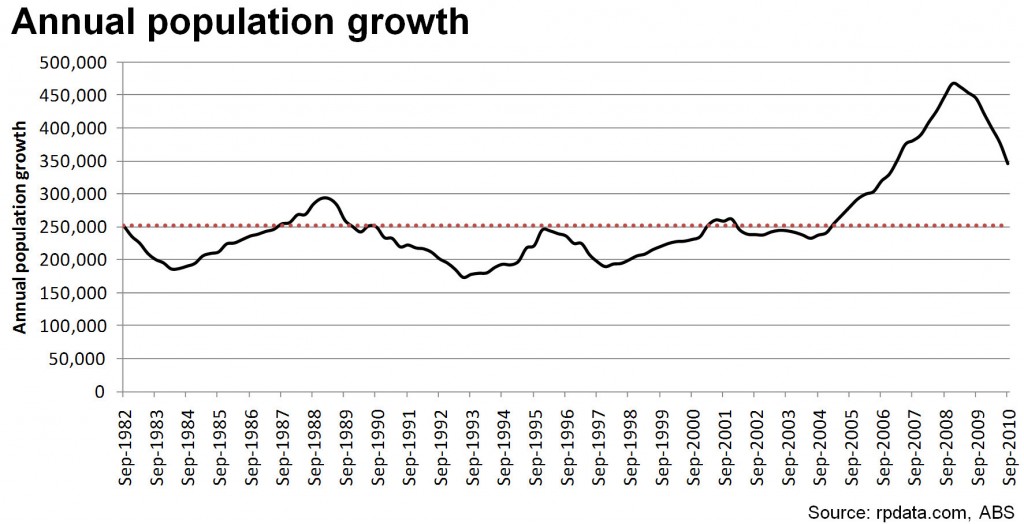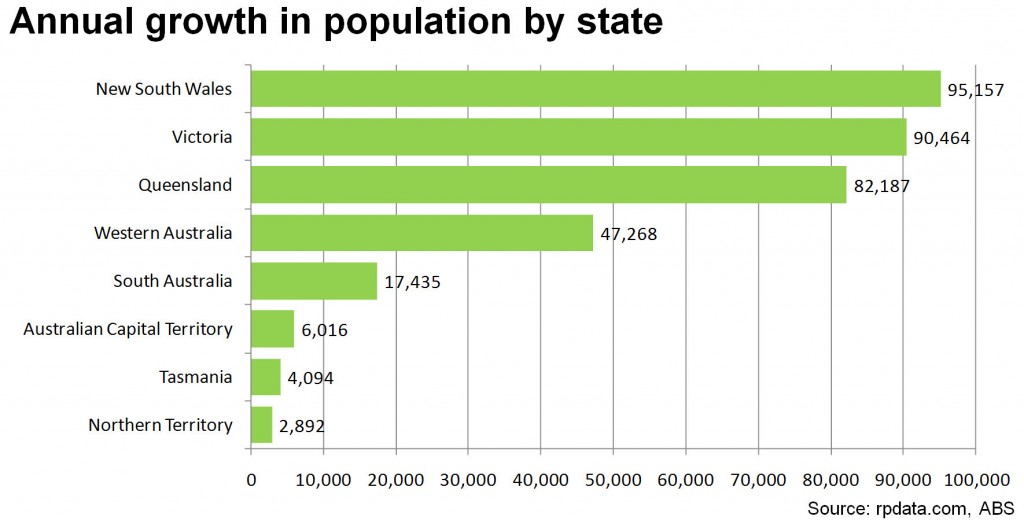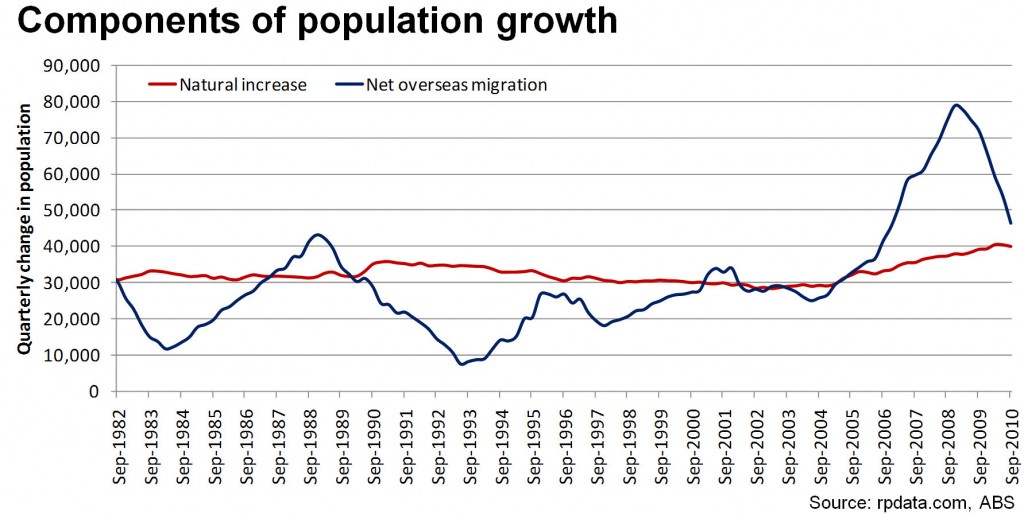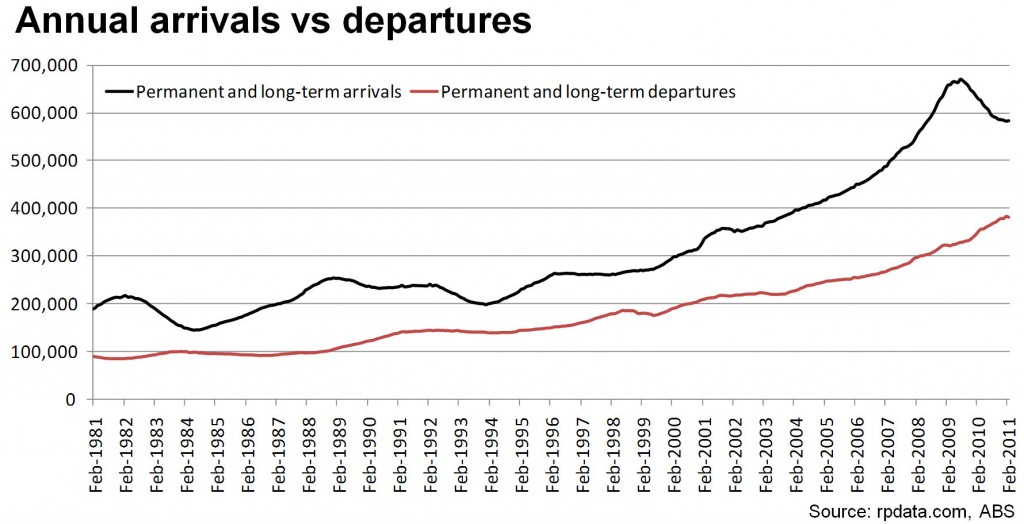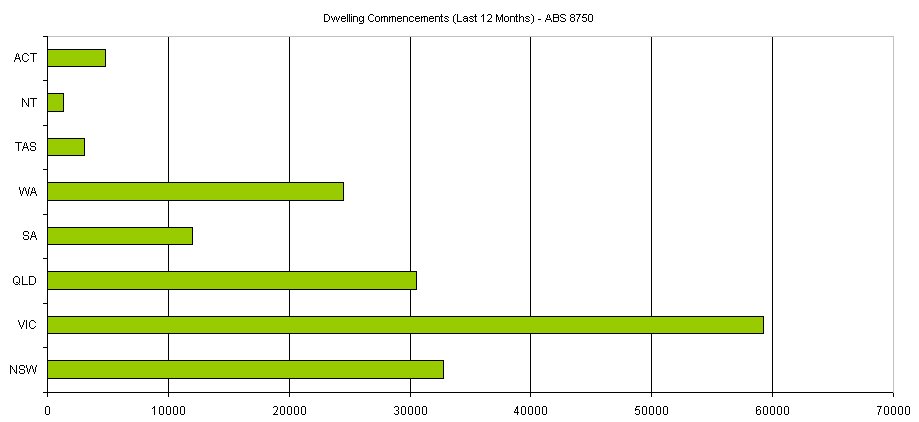RPData produce a weekly report about the housing market. Their latest offerring has some very interesting data on Australia’s population growth. I do not totally agree with their conclusions from the data but that doesn’t change its usefulness.
Australia’s population growth slowing as migrant numbers fade
With cuts to the migration intake, Australia’s annual rate of population growth is the lowest recorded since 2006. At the same time serious labour shortages are becoming apparent within Australia’s key economic driver: the resources sector.
The most recent demographic data released by the Australian Bureau of Statistics (ABS) for September 2010 shows that nationally, population growth is slowing, largely fuelled by a slowdown in net overseas migration.
Over the 12 months to September 2010, Australia’s population increased by 345,500 persons. In numerical terms, population growth was at its lowest level since the 12 months to December 2006 when Australia’s population increased by almost 330,000 persons over the year.
On an annual basis between September 1981 and September 2010, Australia’s population has increased by almost 252,000 persons annually. Given this and despite the slowdown in migrant numbers, the current rate of population growth is still 37% above the long-term average however, it has clearly slowed markedly in recent times.
Across the states, New South Wales has recorded the greatest increase in population over the past year in raw number terms (95,157). Interestingly, population growth in New South Wales, Victoria and Queensland combined has accounted for almost 78% of growth over the past year.
In percentage terms, Western Australia has been the fastest growing state over the year with the population increasing by 2.1%. Growth in Queensland (1.9%) and the Australian Capital Territory (1.7%) was also quite strong.
As previously mentioned, the rate of population growth over the year to September 2010 was the slowest in almost four years. The rapidly deteriorating rate of population growth is due to the decline in net overseas migration.Over the past year, net overseas migration was recorded at almost 186,000 persons, well down from the recent peak of more than 315,000 persons over the year to December 2008. Despite the falling rate of migration it remains well above (54%) the long-term average of 120,000 persons annually.
The other component of population growth, natural increase (simply births minus deaths) remains strong. During the year, almost 160,000 more children were born than persons passed which is just shy of recent highs. Natural increase has accounted for 46.2% of the country’s population growth over the last year which was its largest proportion since June 2005 (46.6%). The rate of natural increase is currently 24% higher than the long-term average.
The Federal Government’s current target for migration during the 2010-11 financial year is 168,700 persons according to the Department of Immigration and Citizenship. This indicates that migration levels are likely to remain at fairly similar levels to that which have been recorded over the past two financial years. Importantly, net overseas migration also takes into account Australian national’s who have left Australia long-term returning and Australian citizens that leave Australia whereas migration targets do not include expats that return home. It is important to also note that New Zealander’s are not included in the migration statistics and are virtually free to come and go as they please. During 2009-10, the greatest number of migrants were coming from: United Kingdom (25,738), China (24,768) and India (23,164).
The ABS publishes statistics which highlight the differential between permanent and long-term arrivals and departures to Australia. The data is represented on an annual basis and highlights that permanent and long-term arrivals are trending lower (as suggested by net migration numbers) and permanent and long-term departures are climbing. The net result of these conditions given that the data is more timely, is that we would expect that net migration will continue to fall over the coming quarters.
Given the ongoing softening of population growth and the fact that Australian consumers are continuing to save despite the fact that the unemployment rate is low (5%) and wages are growing at a rate faster than inflation, we expect that pressure will start to mount from businesses to increase our migration intake. Not only to fill skills shortages but also to support those baby boomers approaching retirement age that have not received superannuation contributions throughout their entire working life.
These retirees will in some form or another rely on Government pensions which are funded by taxes.
The implications of a population which continues to grow is increasing demand for affordable housing and infrastructure such as: public transport, roads, schools, shopping centres and hospitals. Surely the Federal, State and Local Government’s need to start taking appropriate action to support a growing population. Although a Federal Population Minister has been appointed, to date there has been little action.
I have a couple of comments about this.
I am still yet to be convinced that wages are growing at a faster rate than inflation in an aggregate sense. The latest income tax data from the ATO, although a little old, suggests that average wages are nothing like what I have seen some quoting and I am also well aware that inflation figures and reality are somewhat seperated from each other. Another interesting thing to note is a comparison of annual population growth and annual dwelling starts.
It seems that Qld and NSW are lagging the other states in terms of growth of dwelling builds per person, while Victoria seems to be expecting a population boom shortly. There is a very strong downward trend in the overseas migration data and although I am aware government policy plays its part here the number of permanent departures seems to be increasing rapidly. I have heard many people, including Oz citizens, talk recently that Australia is simply too expensive and they are thinking of leaving to find a better life overseas. With the AUD so high this may be a good time for a stampede towards the exits.
